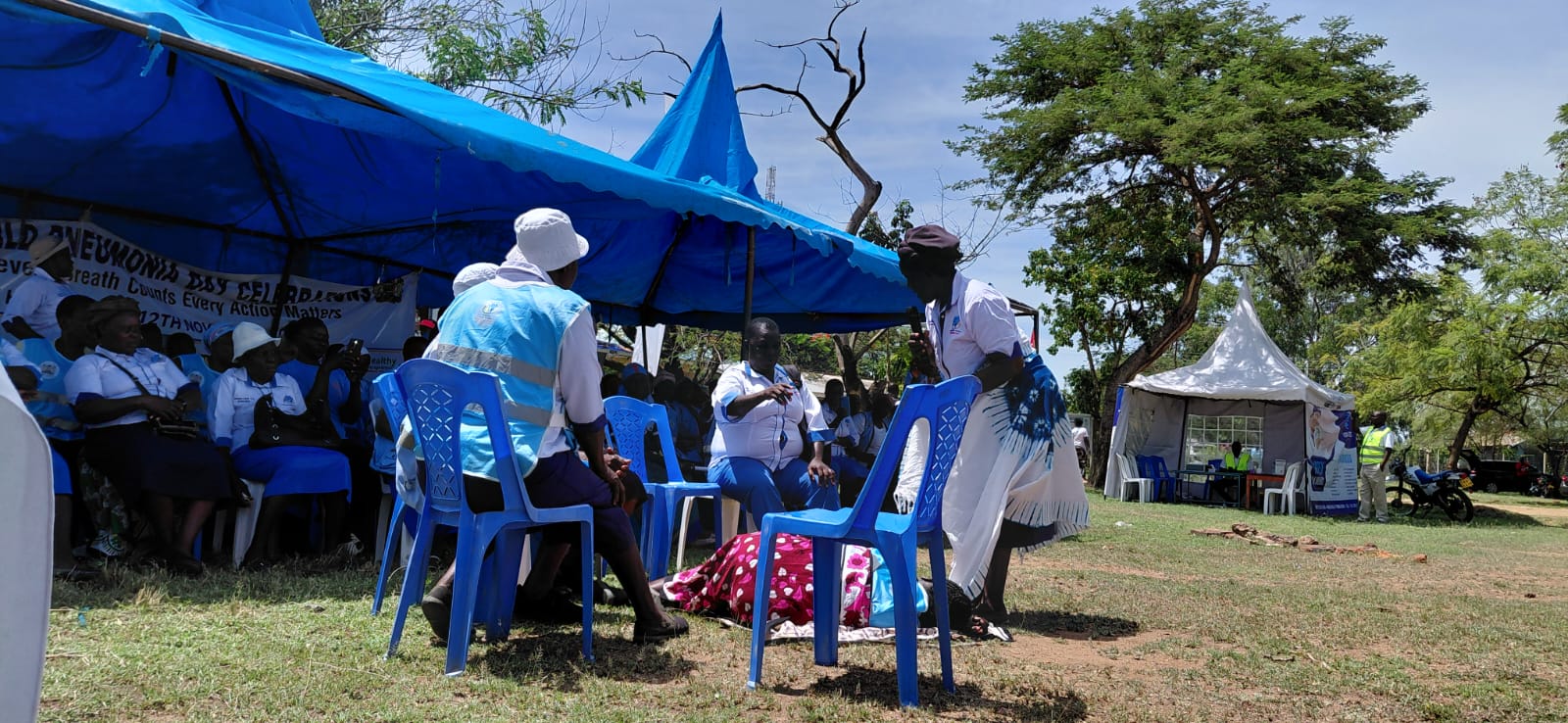When Marceline Olwal, 57, walked into the courtyard of Nyakach Sub-county Hospital, she wasn’t in her usual door-to-door routine as a Community Health Promoter (CHP).
She and her colleagues, Teresa Airo, Jane Achieng’, Hellen Okoth and Naomi Opande were there to perform a skit that would bring the audience face-to-face with pneumonia, one of the deadliest childhood illnesses in Kenya.
The group formed a tight circle as the performance began. One of them lay on the ground, gasping dramatically for air, mimicking the laboured breathing of a pneumonia patient.
Around her, others played family and community members in panic and unsure of what to do. The scene was familiar to many in the audience.
Then, as tension built, Marceline stepped in portraying a trained CHP visiting a home in distress. She calmly examined the “patient,” explained the symptoms and guided the “family” to seek urgent care at the nearest facility. The skit ended with applause, but also reflection.
A poignant reminder that community health work begins where families live, often long before they reach the hospital.
The performance was part of Kisumu County’s World Pneumonia Day celebrations on November 12, themed “Defeat Pneumonia: Every Breath Counts; Every Action Matters.”
The crowd, which included health workers, parents, schoolchildren and county officials, watched in silence then erupted in appreciation. The performance, though simple, carried a powerful message about early recognition, prevention and timely referral of pneumonia cases.
“Art has become one of our most effective tools for community mobilization and public health education,” said Jack Owuor, Child Health Coordinator, Nyakach Sub-county. “Through drama, people see real-life situations they can relate to and that message sticks far longer than any lecture.”
The CHPs’ use of performance art has become a signature approach across Kisumu County in a blend of creativity and compassion that helps them reach even the most remote villages with vital health information.
The day’s celebration also highlighted Kisumu County’s growing efforts to combat pneumonia, which remains one of the top causes of child mortality. According to the latest county data, the prevalence stands at 7.5 percent.
For the CHPs, the performance was a reflection of their daily commitment to saving lives.
“What we acted out today happens in real life,” said Teresa Airo. “Sometimes we find children breathing fast and parents don’t know what’s happening. We educate them, make referrals and follow up. Drama helps us prepare communities to act early.”
Her colleague Naomi Opande added that the group’s art performances have become a vital bridge between health facilities and villages.
“People understand better when they see the story play out,” she said. “When they later face a similar situation, they remember what the CHP in the skit did and they act fast.”
As the celebration came to a close, the CHPs mingled with guests, distributing information leaflets and answering questions from curious parents. The courtyard that had moments ago been a stage turned into a lively health classroom, filled with laughter, curiosity and renewed awareness.
Marceline Olwal smiled as she packed up her props, proud that her voice and her art had reached hearts.
“We may not be doctors,” she said softly, “but today, we treated ignorance through performance.”
In Kisumu County, where community meets creativity, the fight against pneumonia is no longer confined to clinics but also taking place on stages, in homesteads and in the hearts of people who now know that every breath truly counts.










